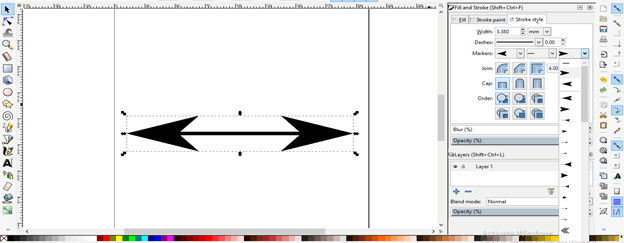

But it's a question of someone taking the time to implement it. There's no doubt that this should be the default behaviour, and it's one of the most requested features (bug 165865). Within the Fill & Stroke menu, navigate to the. Alternatively, you can press Control + Shift + F on your keyboard to open the menu. To do this, we must open the Fill & Stroke menu by navigating to: Object > Fill and Stroke. Now we will turn this path into an arrow. This should change at some point in the future, as it is one of the most requested features (see this bug report which gathers progress, or lack thereof). Step 2: Apply a marker to the end of the path to be used as the arrow head. In that case, there is no other way than to edit the SVG source for the objects. However, this script is an external Python tool, so you might be out of luck if you use Inkscape on Windows or Mac OS X (which has Python, but is missing some dependency). You can change their color to match the color of the stroke of the object they are applied to by enabling an effect: Extensions > Modify Path > Color Markers to Match Stroke. Set the stroke thickness to 6 and add a small arrow head on the end. arrow ends)?īy default, markers are black. tool to place a horizontal line for the force vector next to the lower block. How do I change the color of markers (e.g. This is one of the most frequently asked questions about Inkscape, so I'll just quote from their site: Extensions and workarounds are no longer needed. end variants of triangle markers can be used asjust another arrowhead shape. Edit: As of Inkscape 0.91, markers take the color of the object. Arrow tail An arrow tail marker is available only in one size (matching the.


 0 kommentar(er)
0 kommentar(er)
